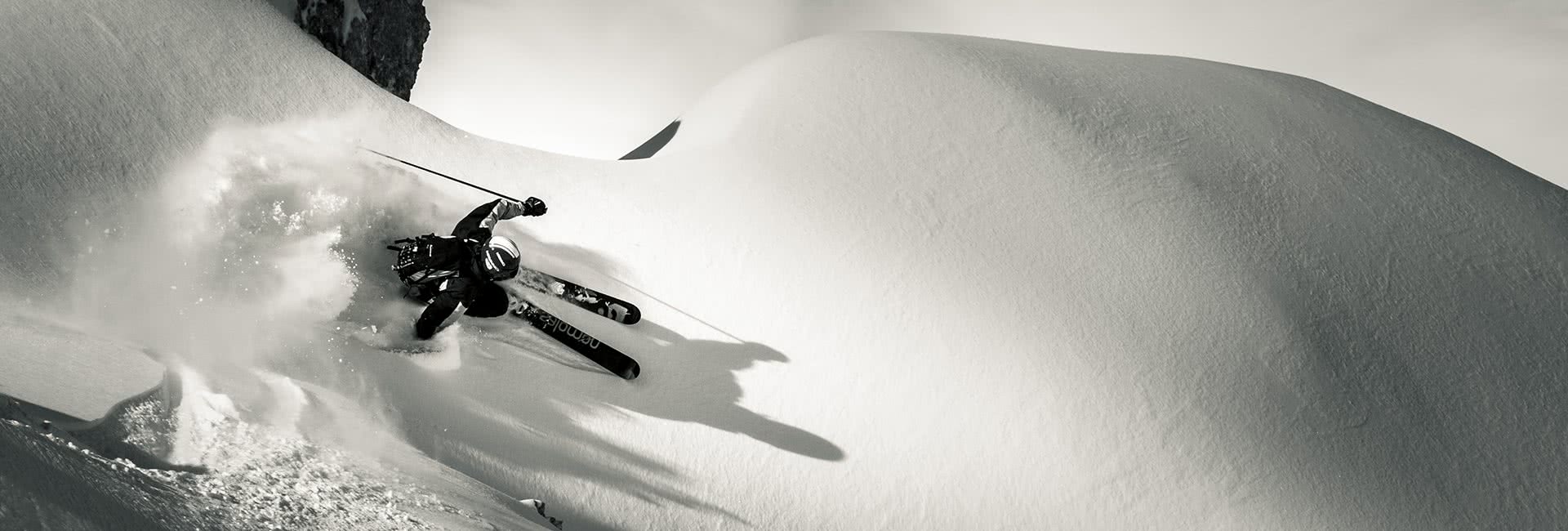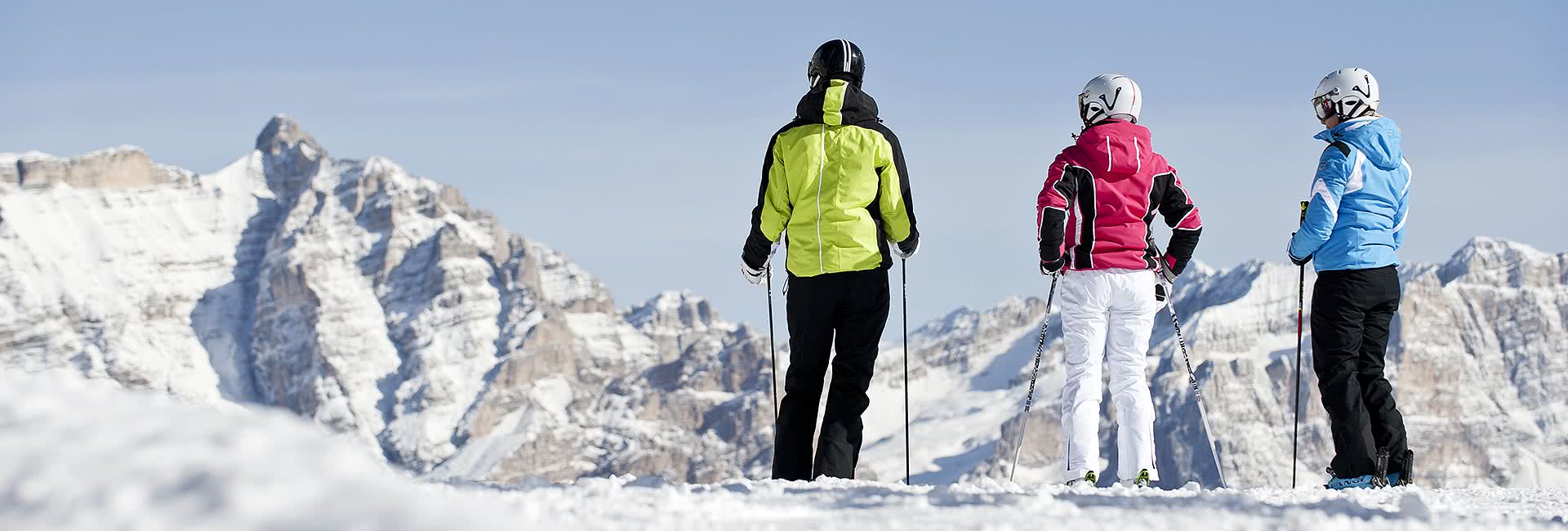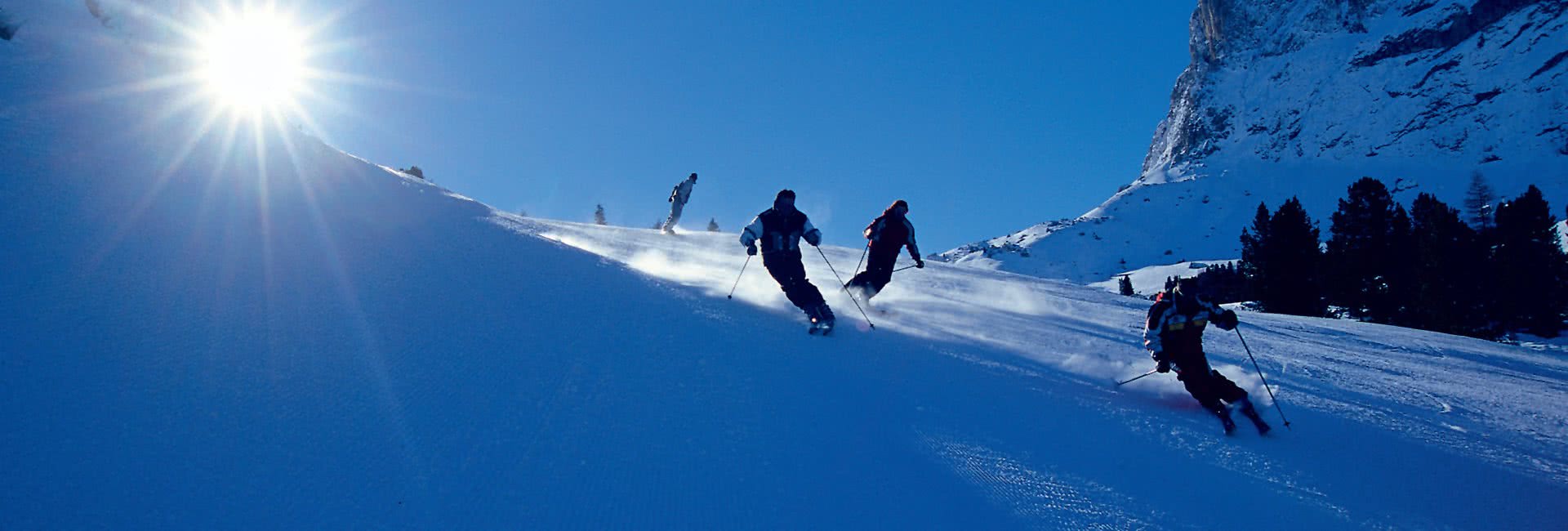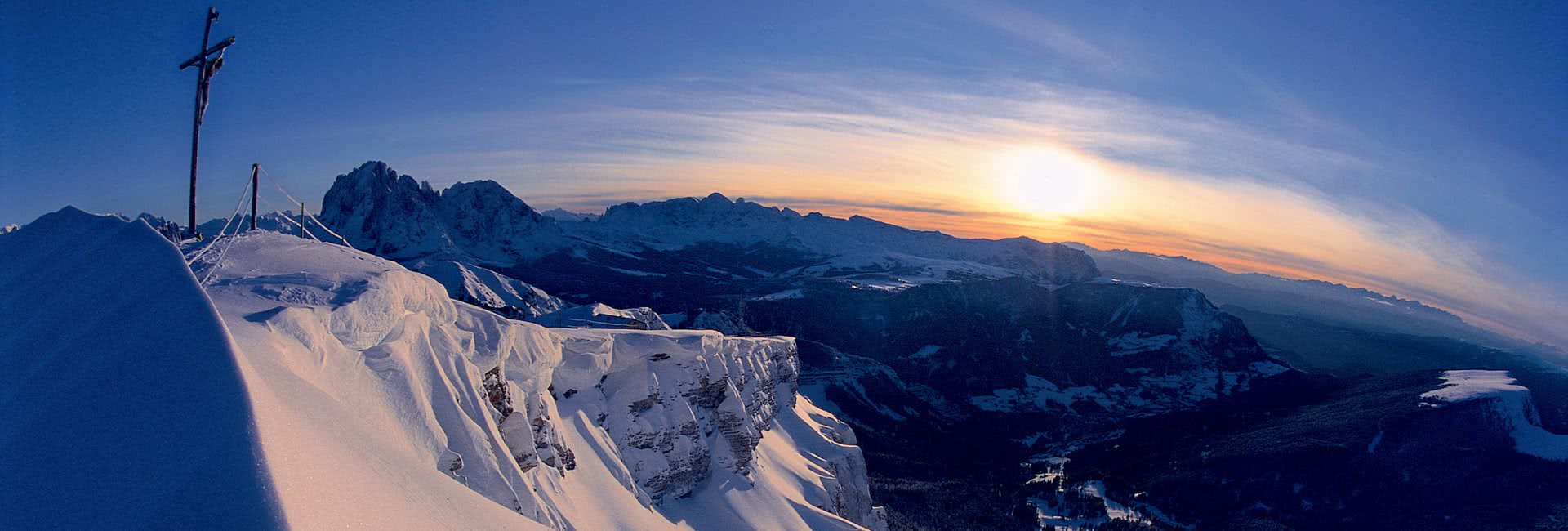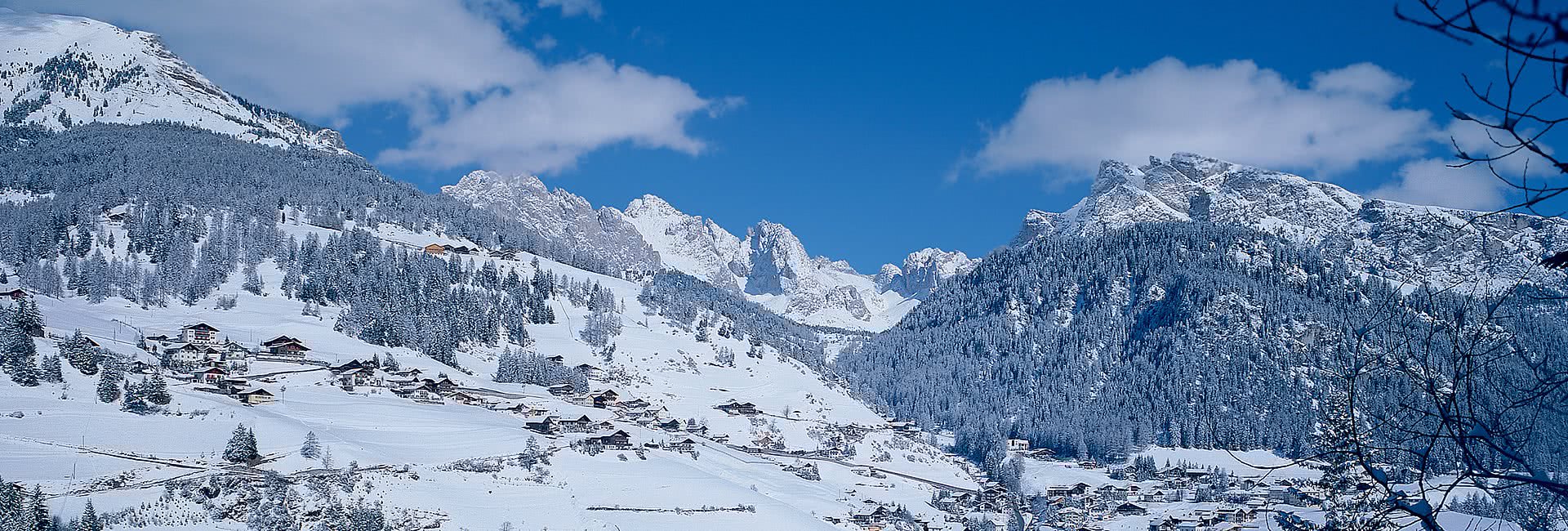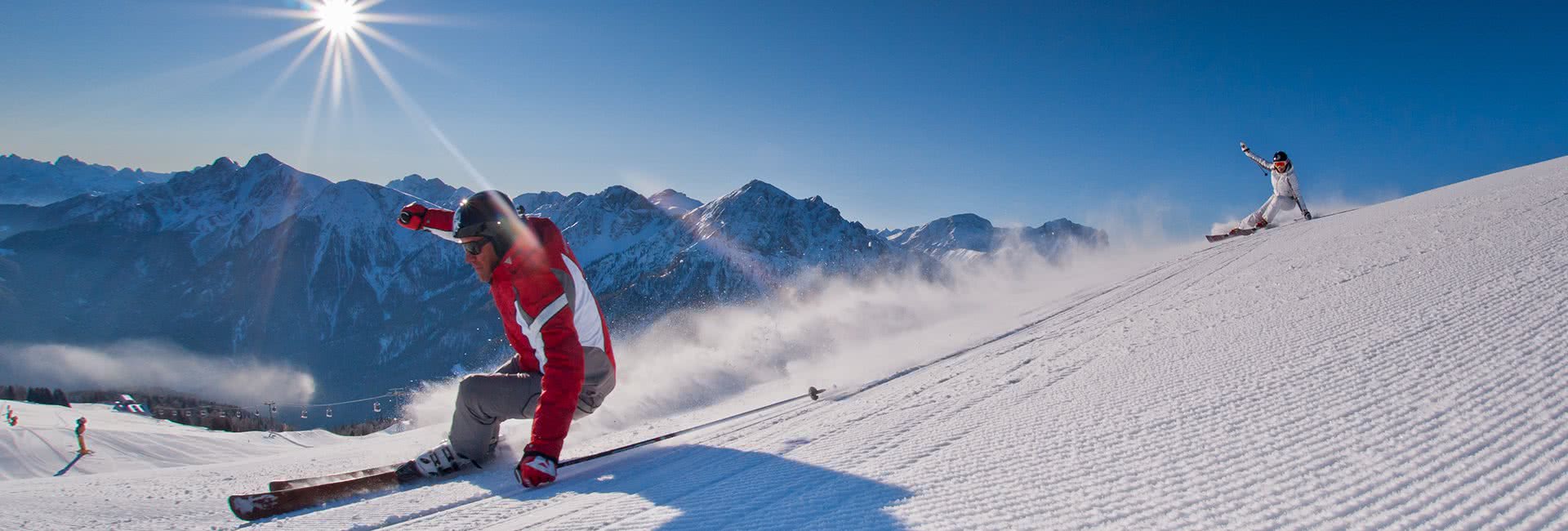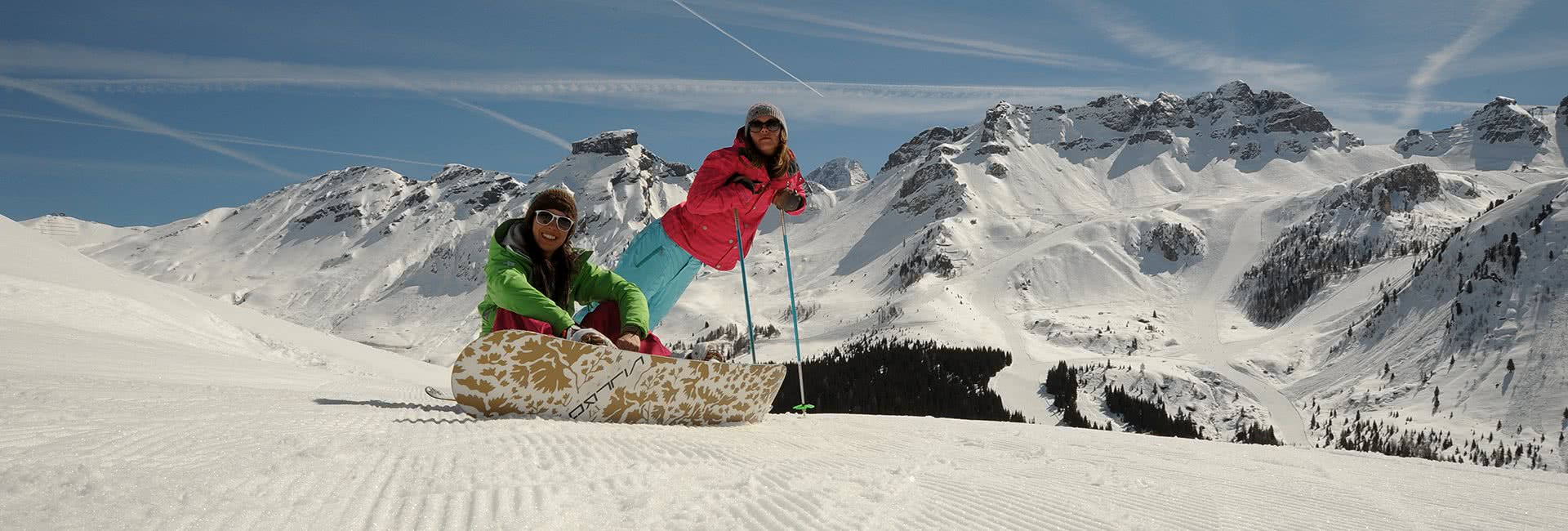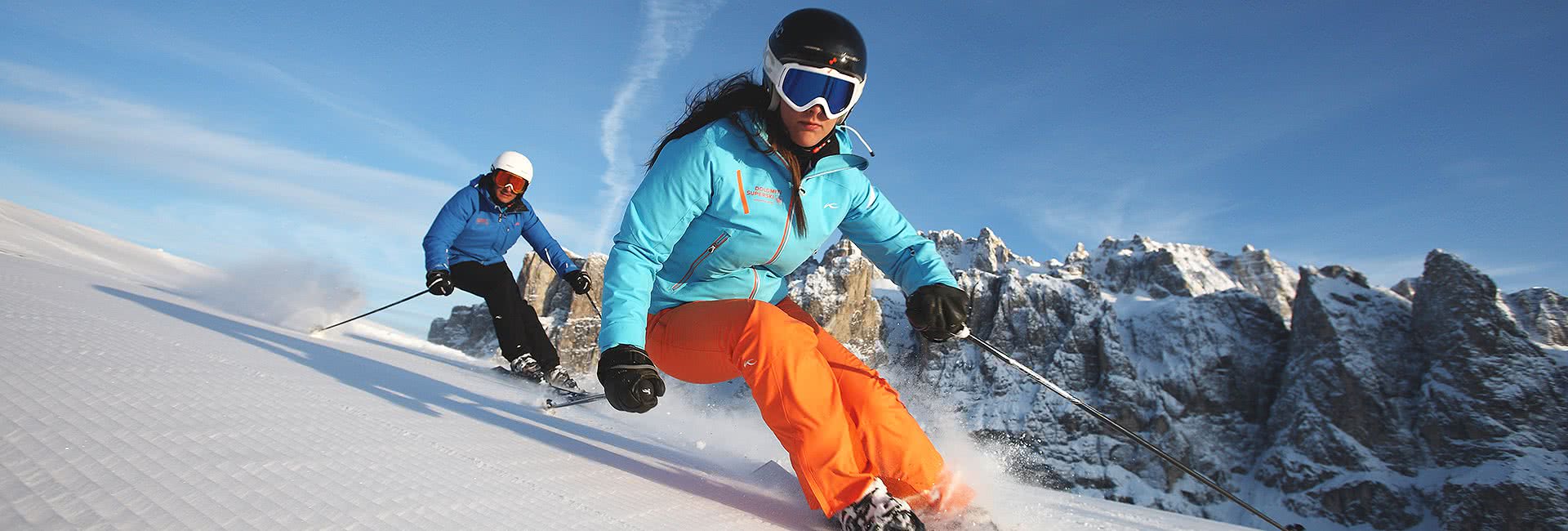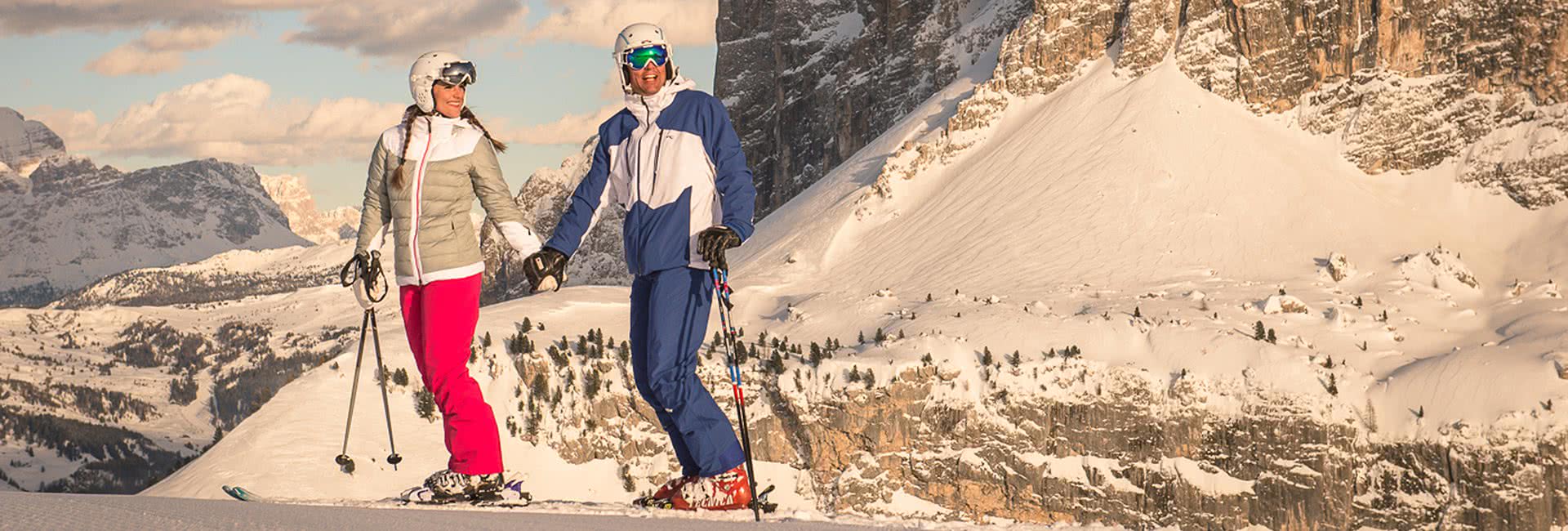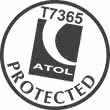Ski Holidays in Dolomiti Superski
With iconic craggy peaks, cruisey groomers and world-cup descents – not to mention the Sella Ronda and Marmolada glacier, the Dolomiti Superski is an area like no other. Encompassing a number of friendly villages with their unique mix of Austrian décor and Italian cuisine, the list of reasons to ski here goes on and on…
- Flight Time
- 2 hours
- From London
- Nearest Airports
- Turin, Milan Malpensa
- Geneva, Innsbruck
- Time zone
- GMT + 1 hour
- Language
- Italian
- Currency
- Euros
- Ski Season
- Dec - April
Dolomiti Superski Stats
The Dolomiti Superski area, the ‘largest ski network in the world’ has an incredible 1200 km of groomed piste to explore over 12 different ski areas. Best of all, the whole thing is covered by one all-inclusive lift pass.
Unlike other famous ski areas (ie. the 3 Valleys), you can’t ski between all the resorts, so the usual practice is to use the local buses. There are some fantastic linked areas within the wider domain, in particular the world famous Sella Ronda.
Encompassing a bunch of Italian resorts, this mountain range is an expanse of such unspoilt natural beauty that in 2009, UNESCO declared it a World Heritage site, putting it alongside other earthly marvels like the Pyramids of Giza and the Great Barrier Reef.
These ancient peaks formed more than 250 million years ago, originating as sea coral in the Tetide sea and are quite distinct from the rest of the Alps. Just take a look at the Cinque Torri, a stunning outcrop of 5 towers (literally translated). The legendary Tre Cime, Sassolungo and Sella Massif are absolutely jaw-dropping at sunrise, when they glow a striking pink-red colour (the sights at sunset are pretty awesome too if you want to avoid the early start...). Take the retro gondola up to one of the highest peaks, Monte Cristallo to enjoy an amazing 360 panorama.
The 12 ski areas cover a range of resorts, each a unique platform to the panorama. The best known is chic Cortina, while lesser known Corvara is our favourite for appreciating the landscape. Val Gardena is famous for its charming villages and Ladin culture and over towards Val di Fassa you have some great Tyrolean architecture. Arabba is notable as the nearest to the snow sure Marmolada Glacier and the modern resort of Kronplatz is known for its superbly groomed, efficiently lift-linked terrain.
What's the ski area like in Dolomiti Superski?
Which ski resorts are in Dolomiti Superski?
Cortina, Corvara, Selva, Ortisei, St Cristina, Kronplatz, Arabba, Canazei, Campitello, Pozza di Fassa.
Ski Area Facts
Beginner Slopes
Intermediate Skiing
Advance & Expert Terrain
Snowboarding Trails
We like the mountain huts in Italy as they tend to put a lot of effort into presentation and service. The Bombardino is a popular tipple in this part of the world - made with a dash of brandy and eggnog and topped off with cream. The Italians love their vino so it’s also worth asking what the house red is! Everyone loves a good sun terrace so don’t forget the sun cream while you’re basking on a deckchair.
With several lively bars along the ‘Corso Italia’ street of Cortina you’ll see why it has some of the best après ski in the area - we like the cosy Café Sport. Selva and Ortisei are the liveliest of Val Gardena’s villages, contrasting slightly with St Cristina which is more suited to a quiet sherry with friends.
The Alta Badia area is all about finding a favourite bar and getting to know the locals over a Bombardino. Kronplatz is the place to find the karaoke bars like Bus Stop, where dancing on the table is a do not a don’t. Val di Fassa shouldn’t disappoint if it’s an imaginative cocktail you’re looking for and lots of venues have a happy hour. In Arabba, it is the hotels that are key to finding the local bars, try Peter’s.
For something a little more down-beat and harmonic to the Brit style, visit the local café’s and tearooms. The synchrony of Italian and Austrian culture means the restaurants are worth devoting an evening meal to - being in Italy you won’t struggle to find a decent pizza or pasta dish.
Across the Dolomite resorts there are 10 floodlit pistes for night skiing. You’ll never be too far from some tobogganing, walking-routes, curling, snowshoeing or even horse-riding (especially from St Cristina and between La Villa and Corvara).
Best Time to Visit Dolomiti Superski
What's Dolomiti Superski like at Christmas?
Spend a white Christmas in the Dolomites with a zip round the Sella Ronda, a mooch up the Marmolada Glacier and a wander round the festive markets.What's Dolomiti Superski like in the New Year?
Celebrating New Year in the Dolomites is not likely to be disappointing - join in the hotel gala evenings, crack out a resolution at the world cup runs and finish the day with something bubbly.What's Dolomiti Superski like in Half-Term?
While the rest of Britain heads off to clog up the slopes in other European resorts, take advantage of the Italians not having a half term week and squeeze in a bit more skiing this February half term in the Dolomites.What's Dolomiti Superski like at Easter?
Squeeze those Easter eggs in the suitcase, hop on a plane and visit the Dolomites at Easter. You’ll be debating between lounging on a sunny terrace and skiing on the higher slopes; either way you get the views.Ski Accommodation in Dolomiti Superski
Search all Dolomiti Superski ski deals or pick your preferred accommodation type below:
Dolomiti Superski Ski Holiday Resources
- Dolomiti Superski Ski Chalets
- Dolomiti Superski Ski Hotels
- Dolomiti Superski Ski Apartments
- Last-minute Dolomiti Superski
Need help choose your Dolomiti Superski ski holiday? Call us on 020 7770 6888 or click Enquire - we love to help!
Ski Resorts in Dolomiti Superski





